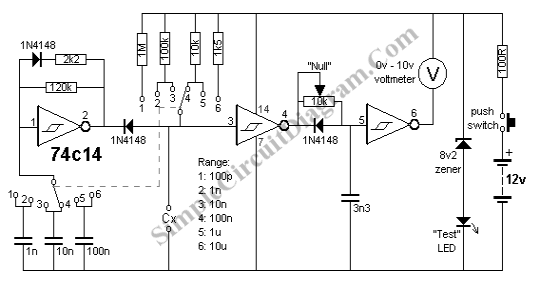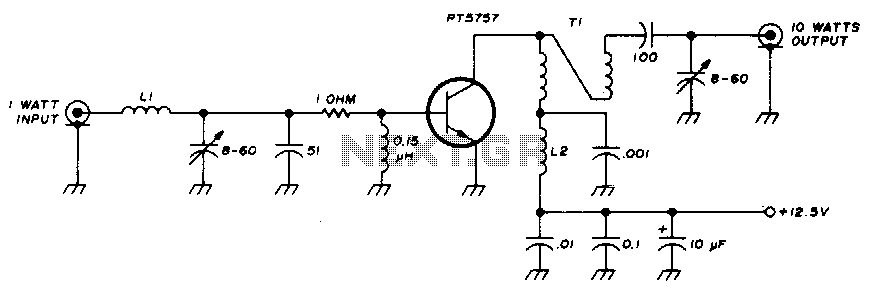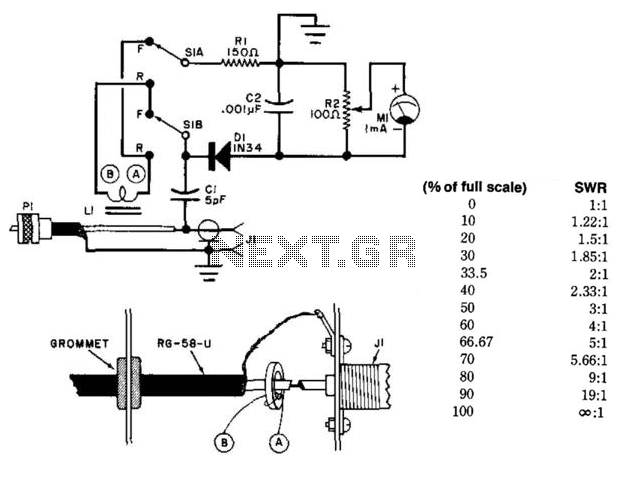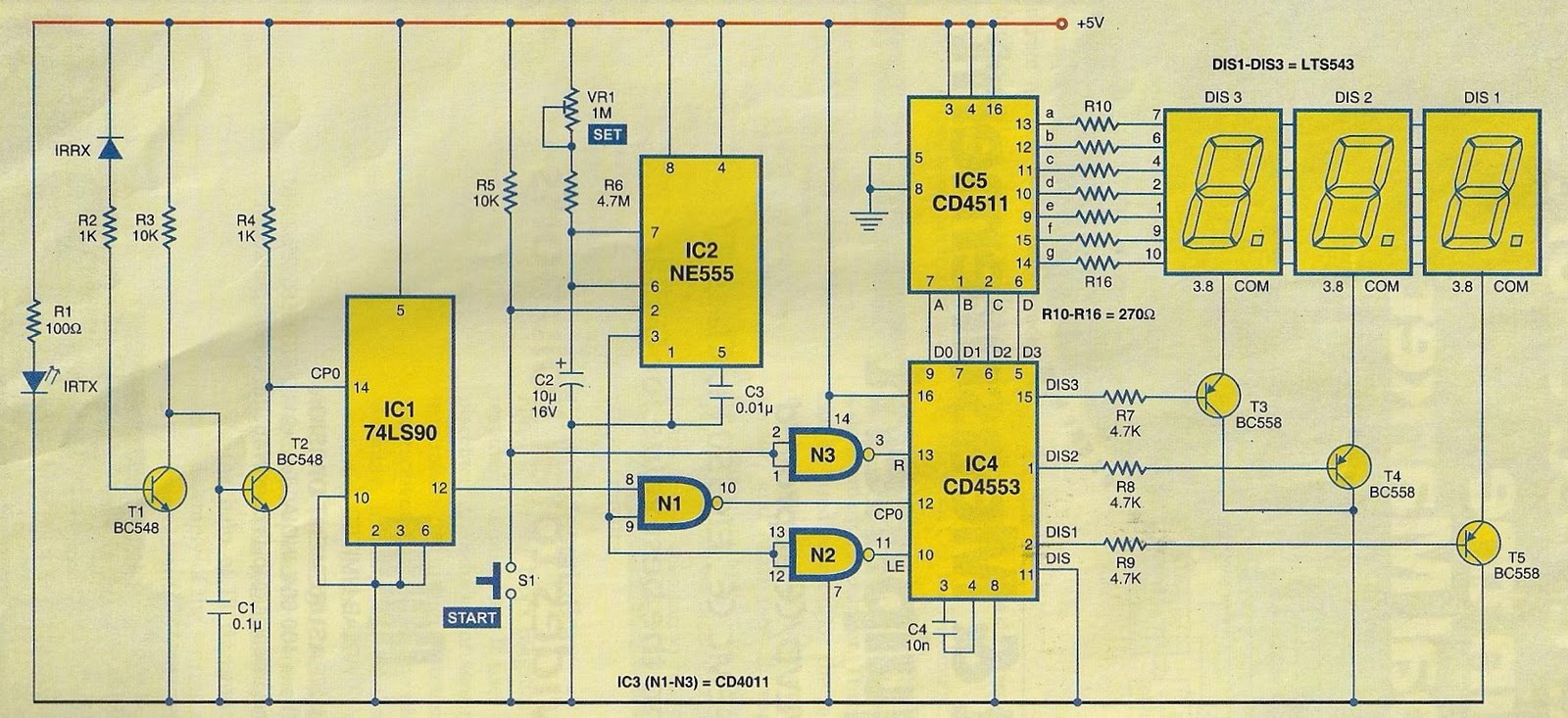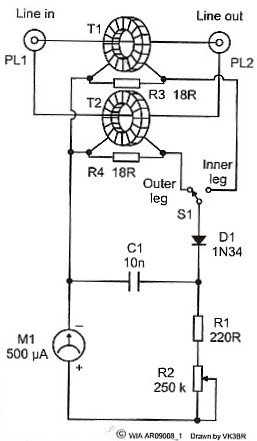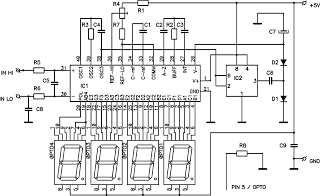
Capacitance meter
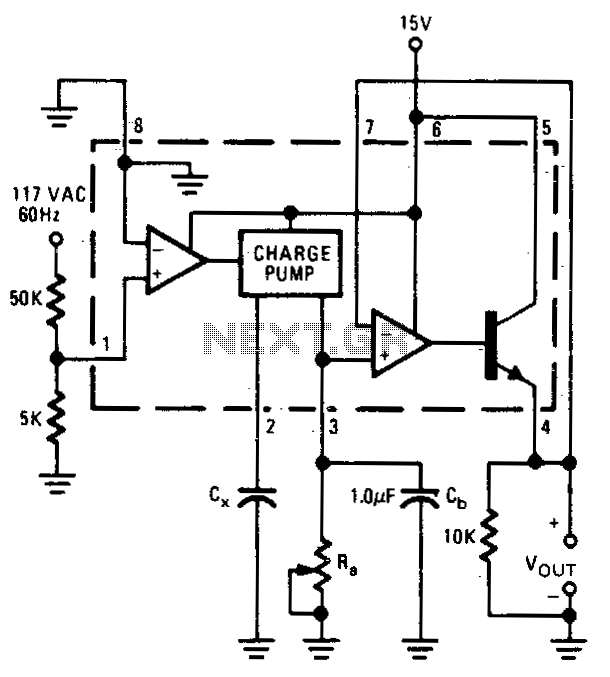
The output voltage is proportional to the capacitance connected to pin 2 of the charge pump. The meter operates over a capacitance range of 0.1 to 0 µF with a set resistance of 111 kΩ. Within this capacitance range, the output voltage varies from 1 to 0 volts when powered by a 15-volt supply. A constant frequency reference is derived from the 60 Hz line.
The described circuit utilizes a charge pump configuration to measure capacitance values by translating them into a corresponding output voltage. The charge pump's pin 2 is designated for connecting the capacitor under test, while the output voltage reflects the capacitance value based on a defined relationship. Specifically, as the capacitance increases from 0.1 µF to 0 µF, the output voltage decreases linearly from 1 volt to 0 volts, indicating a direct correlation between capacitance and output voltage.
The circuit is powered by a stable 15-volt power supply, which is essential for maintaining consistent operation across the measurement range. The reference frequency of 60 Hz is critical as it provides a stable timing signal for the charge pump operation, ensuring accurate capacitance measurements. This frequency is typically derived from the mains power supply, which is common in many electronic measurement devices.
The use of a 111 kΩ resistor in the circuit serves as a part of the voltage divider or feedback mechanism, which helps in calibrating the output voltage according to the capacitance range. This resistor value is chosen to optimize the sensitivity and linearity of the output voltage in relation to the capacitance being measured.
Overall, this capacitance measurement circuit is designed for simplicity and effectiveness, making it suitable for various applications in electronics where capacitance needs to be evaluated. Proper implementation of the charge pump and associated components will yield reliable measurements across the specified capacitance range.Output voltage is proportional to the capacitance connected to pin 2 of the charge pump. The meter works over a range of 01 to 0 µF with a set at 111 K. Over this range of capacitance, the output voltage varies from 1 to 0 volts with a 15 volt power supply A constant frequency reference is taken from the 60-Hz line. 🔗 External reference
The described circuit utilizes a charge pump configuration to measure capacitance values by translating them into a corresponding output voltage. The charge pump's pin 2 is designated for connecting the capacitor under test, while the output voltage reflects the capacitance value based on a defined relationship. Specifically, as the capacitance increases from 0.1 µF to 0 µF, the output voltage decreases linearly from 1 volt to 0 volts, indicating a direct correlation between capacitance and output voltage.
The circuit is powered by a stable 15-volt power supply, which is essential for maintaining consistent operation across the measurement range. The reference frequency of 60 Hz is critical as it provides a stable timing signal for the charge pump operation, ensuring accurate capacitance measurements. This frequency is typically derived from the mains power supply, which is common in many electronic measurement devices.
The use of a 111 kΩ resistor in the circuit serves as a part of the voltage divider or feedback mechanism, which helps in calibrating the output voltage according to the capacitance range. This resistor value is chosen to optimize the sensitivity and linearity of the output voltage in relation to the capacitance being measured.
Overall, this capacitance measurement circuit is designed for simplicity and effectiveness, making it suitable for various applications in electronics where capacitance needs to be evaluated. Proper implementation of the charge pump and associated components will yield reliable measurements across the specified capacitance range.Output voltage is proportional to the capacitance connected to pin 2 of the charge pump. The meter works over a range of 01 to 0 µF with a set at 111 K. Over this range of capacitance, the output voltage varies from 1 to 0 volts with a 15 volt power supply A constant frequency reference is taken from the 60-Hz line. 🔗 External reference
Warning: include(partials/cookie-banner.php): Failed to open stream: Permission denied in /var/www/html/nextgr/view-circuit.php on line 713
Warning: include(): Failed opening 'partials/cookie-banner.php' for inclusion (include_path='.:/usr/share/php') in /var/www/html/nextgr/view-circuit.php on line 713
